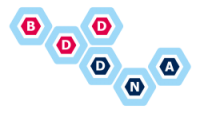Clear Understanding of AI Behavior
AI projects involve complex algorithms and models, making it crucial to define and understand the expected behavior. BDD facilitates collaboration between stakeholders, developers, and data scientists to create well-defined scenarios that capture the desired AI behavior. By focusing on the expected outcomes, BDD ensures a shared understanding and alignment across the project team, reducing the risk of miscommunication and enhancing the accuracy of AI implementations.
Verification and Validation of AI Models
Validating and verifying AI models is essential to ensure their accuracy and reliability. BDD promotes the creation of executable specifications that serve as tests for the AI system. These specifications provide a clear and structured way to evaluate the AI models against the desired behavior. By automating these tests, teams can continuously validate the AI system’s performance and identify any discrepancies or deviations, facilitating timely adjustments and improvements.
Collaborative Feedback for AI Improvement
AI projects often require iterations and improvements to enhance model performance. BDD fosters collaboration and feedback loops between stakeholders, developers, and data scientists. Through regular refinement of BDD scenarios and incorporating feedback from domain experts and end-users, AI models can be fine-tuned and optimized. This iterative approach ensures that the AI system continuously aligns with evolving business requirements and delivers the expected outcomes.
Ensuring Ethical AI Practices
Ethical considerations are paramount in AI projects. BDD encourages discussions and considerations around ethical aspects early in the development process. By including ethical considerations as part of BDD scenarios, teams can identify potential biases, privacy concerns, or fairness issues and proactively address them. This approach ensures that the AI system adheres to ethical standards, mitigating risks and building trust with users and stakeholders.
Managing AI Complexity
AI projects can be highly complex, involving large datasets, intricate algorithms, and various technical components. BDD provides a structured approach to manage this complexity by breaking it down into manageable scenarios and features. By decomposing AI functionality into smaller units, it becomes easier to prioritize and implement the necessary components. BDD also aids in maintaining the system’s modularity, allowing teams to make changes or additions without disrupting the entire AI architecture.
Enhancing Explainability and Transparency
AI models often lack transparency, making it challenging to understand the reasoning behind their decisions. BDD promotes the creation of scenarios that not only validate behavior but also serve as documentation. By documenting the expected behavior of the AI system in a human-readable format, stakeholders and users gain insights into how the AI model operates. This transparency fosters trust and facilitates the explainability of AI decisions, addressing concerns related to bias or incorrect predictions.
Conclusion
Integrating Behavior-Driven Development into AI projects brings significant benefits, ensuring clarity, collaboration, verification, and ethical considerations. By defining clear AI behavior, validating models, fostering collaborative feedback, addressing ethical concerns, managing complexity, and enhancing explainability, teams can unlock the full potential of AI technology while delivering successful projects. BDD’s structured and collaborative approach helps align stakeholders, facilitates effective communication, and supports continuous improvement throughout the AI project lifecycle.
Remember, BDD is not limited to traditional software development but extends its value to AI projects. By embracing BDD principles and practices, teams can navigate the complexities of AI, leverage its capabilities, and deliver AI solutions that meet stakeholders’ expectations and drive positive outcomes.


